 |
Convert W64 to MP3
|
Total Audio MP3 Converter converts W64 to MP3. The software is
an ALL-IN-ONE audio converter that supports more than 150
audio and video files.
Total Audio MP3 Converter supports batch conversion and is full compatible with
Vista and
Windows 7.
- Free Download
Total Audio MP3 Converter here and then install the software
by instructions
- Launch Total Audio MP3 Converter
- Choose W64 Files
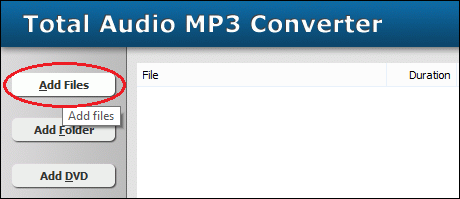
Click on "Add Files" to choose W64 files and add them to
conversion list.
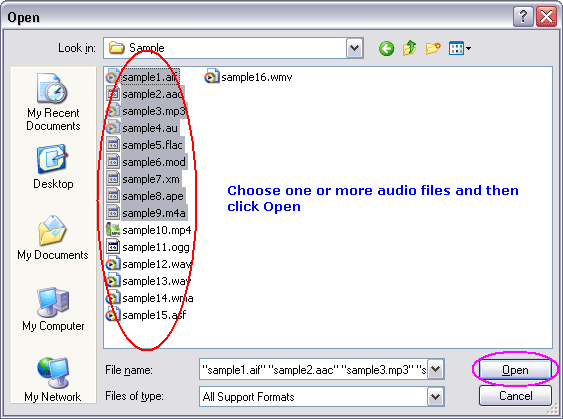
Choose one or more W64 files you want to convert and then click on Open.
- Choose "to MP3"
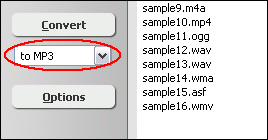
- Convert W64 to MP3
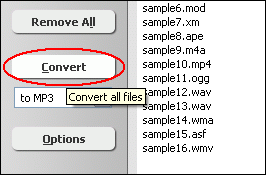
Click on "Convert" to convert W64 files to MP3 format.
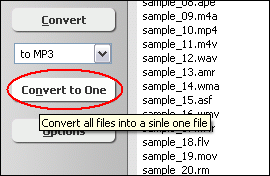
You can also click "Convert to One" to convert and combine/join/merge
all W64 files to one MP3.
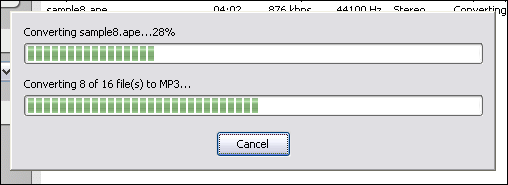
Total Audio MP3 Converter is converting W64 files to MP3 format.
- Play & Browse
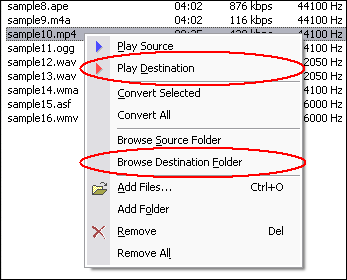
Right-click converted item and choose "Play Destination" to play
the destination file, choose "Browse Destination Folder" to open
Windows Explorer to browse the destination file.
- Done
Top
Total Audio MP3 Converter is 100% clean and safe to install.
It's certified by major download sites.

What is W64?
W64 file is a Sony Wave64 Audio. Sony Wave64 is a file format that's similar to
the RIFF format. The RIFF format allowed for approximately 4GB of audio data,
which was sufficient to hold about 6 hours and 45 minutes of 16-bit/44.1kHz audio.
The advent of multi-channel audio - such as 5.1 surround - and 24-bit/96kHz or
192kHz audio, made the RIFF format inconvenient. To accommodate the larger files,
the Sony Wave64 is a true 64-bit file format designed to overcome the size limitations
of the RIFF format.
W64 typically stores uncompressed sampled audio as pulse-code modulation (PCM)
data, and also supports several codecs for compressed audio. It's developed by
Sonic Foundry, maintained by Sony.
What is MP3?
MPEG-1 Audio Layer 3, more commonly referred to as MP3, is a digital audio encoding
format using a form of lossy data compression. It is a common audio format for
consumer audio storage, as well as a de facto standard encoding for the transfer
and playback of music on digital audio players. MP3's use of a lossy compression
algorithm is designed to greatly reduce the amount of data required to represent
the audio recording and still sound like a faithful reproduction of the original
uncompressed audio for most listeners, but is not considered high fidelity audio
by audiophiles. An MP3 file that is created using the mid-range bit rate setting
of 128 kbit/s will result in a file that is typically about 1/10th the size of
the CD file created from the original audio source. An MP3 file can also be constructed
at higher or lower bit rates, with higher or lower resulting quality. The compression
works by reducing accuracy of certain parts of sound that are deemed beyond the
auditory resolution ability of most people. This method is commonly referred to
as perceptual coding. It internally provides a representation of sound within
a short term time/frequency analysis window, by using psychoacoustic models to
discard or reduce precision of components less audible to human hearing, and recording
the remaining information in an efficient manner. This is relatively similar to
the principles used by JPEG, an image compression format.
W64 to MP3 Related Topics:
DXA to MP3,
EVO to MP3,
EVOB to MP3,
F4A to MP3,
F4B to MP3,
F4V to MP3,
M2TS to MP3,
M4B to MP3,
MVI to MP3,
MXF to MP3,
NSA to MP3,
QCP to MP3,
QT to MP3,
RA to MP3,
RAM to MP3,
SOL to MP3,
STR to MP3,
SWF to MP3,
WMD to MP3,
XA to MP3,
XVID to MP3,
3GP to MP3,
AVI to MP3,
SND to MP3,
SPX to MP3,
TTA to MP3,
UMX to MP3,
MKV to MP3,
MMF to MP3,
MOV to MP3,
VOB to MP3,
VOC to MP3
|








